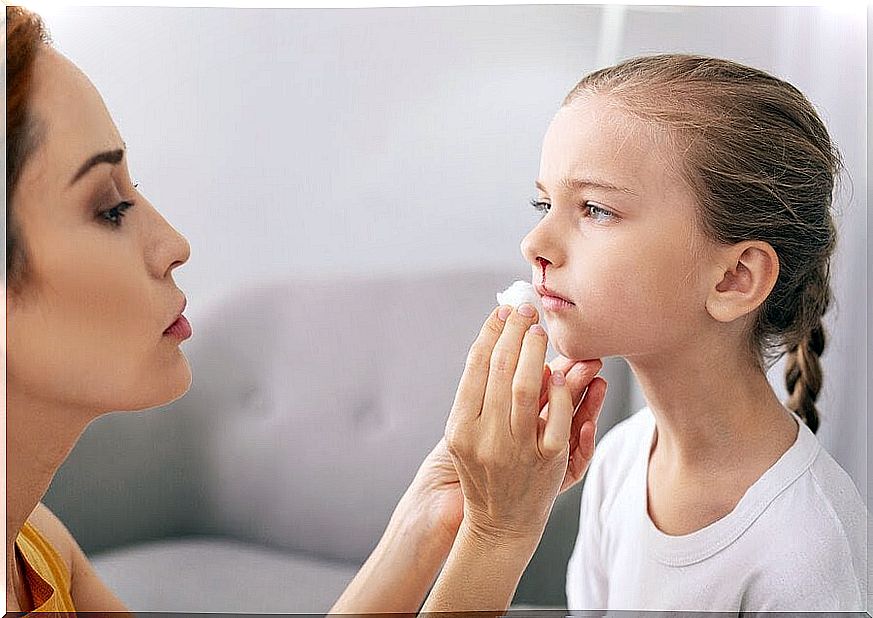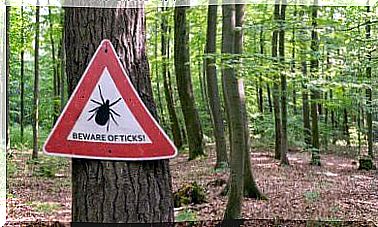How To Treat And Prevent Nosebleeds In Children

Nasal blood in children, also known as epistaxis, is very common. They occur mainly in children between 2 and 10 years of age.
Seeing nosebleeds can definitely worry parents, but it rarely develops into a more serious condition. In general, medical care is not needed and can be treated at home.
Types of nosebleeds in children
Anterior nasal blood is the most common type. It occurs in the front of the nose and when the small blood vessels in the nose rupture. Then the nose starts to bleed.
Another type is posterior nosebleeds. As the name suggests, it occurs in the back of the nose, which are the parts that lie further in. In this type, the blood flows down the throat. This type of nosebleed is not common in children.
Causes of nosebleeds in children
There are many different causes of nosebleeds in children. The most common is dry air. Both dry climate and high heat can irritate and dry out the mucous membranes of the nose. This creates scabs, which itch, and it causes children to itch in the nose. This can cause the nose to bleed.
Cold is also a common cause of nosebleeds in children. It causes irritation in their mucous membranes in the nose, which allows their nose to start bleeding.
This usually happens when children sneeze repeatedly during the day. Allergies can also cause nosebleeds.
Finally, injuries, shocks or falls can cause children to bleed nosebleeds. The same thing happens as we mentioned earlier. Blood vessels rupture in the nose from the blow and it begins to bleed.
How to treat it
When children bleed nosebleeds, it is important that the adults do not panic and worry. When you have to take care of children, it is very important to stay calm. It can help you remember that it is not something serious.
To stop the bleeding, you can pinch your nose with your thumb and forefinger. The child should keep his head in a normal position or tilt it slightly forward. It is important to keep your head in this position still for a while to stop the bleeding.
A very common mistake is to tilt the baby’s head back. It is not good because the baby can put blood in the throat. It can also make them cough or vomit.
When the nosebleeds stop, you should wait a bit. While you wait, make sure the baby does not touch his nose, poke his nose or sneeze. Over the next few days, you should be careful not to hurt him again. His nose is more sensitive and it is easier for him to start bleeding again.
How to prevent nosebleeds
Preventing nosebleeds is relatively easy. Most are caused by the environment or by direct damage. It is important to follow a few tips to prevent nosebleeds:
- One way to prevent nosebleeds is to keep your children’s nails short and well-trimmed. This way you can prevent them from injuring themselves if they poke their noses. In addition, it is important to teach your children not to put their fingers or other objects in their noses.
- When the climate is not ideal, it is a good idea to keep the air moist. You can use a humidifier, preferably one that emits steam. In any case, it is important to keep the equipment clean so as not to spread dirt or dust in the air.
- Another way to prevent nosebleeds in children is to keep the nasal mucosa moist. To do this, you can use saline spray or special creams from the pharmacy. Some of these options help prevent the nasal mucosa from drying out and becoming damaged.
Finally, if children participate in contact sports where they may be injured, we recommend that you use protective equipment so that they do not injure themselves. Remember that even if you can take the necessary precautions, they can still get nosebleeds.









